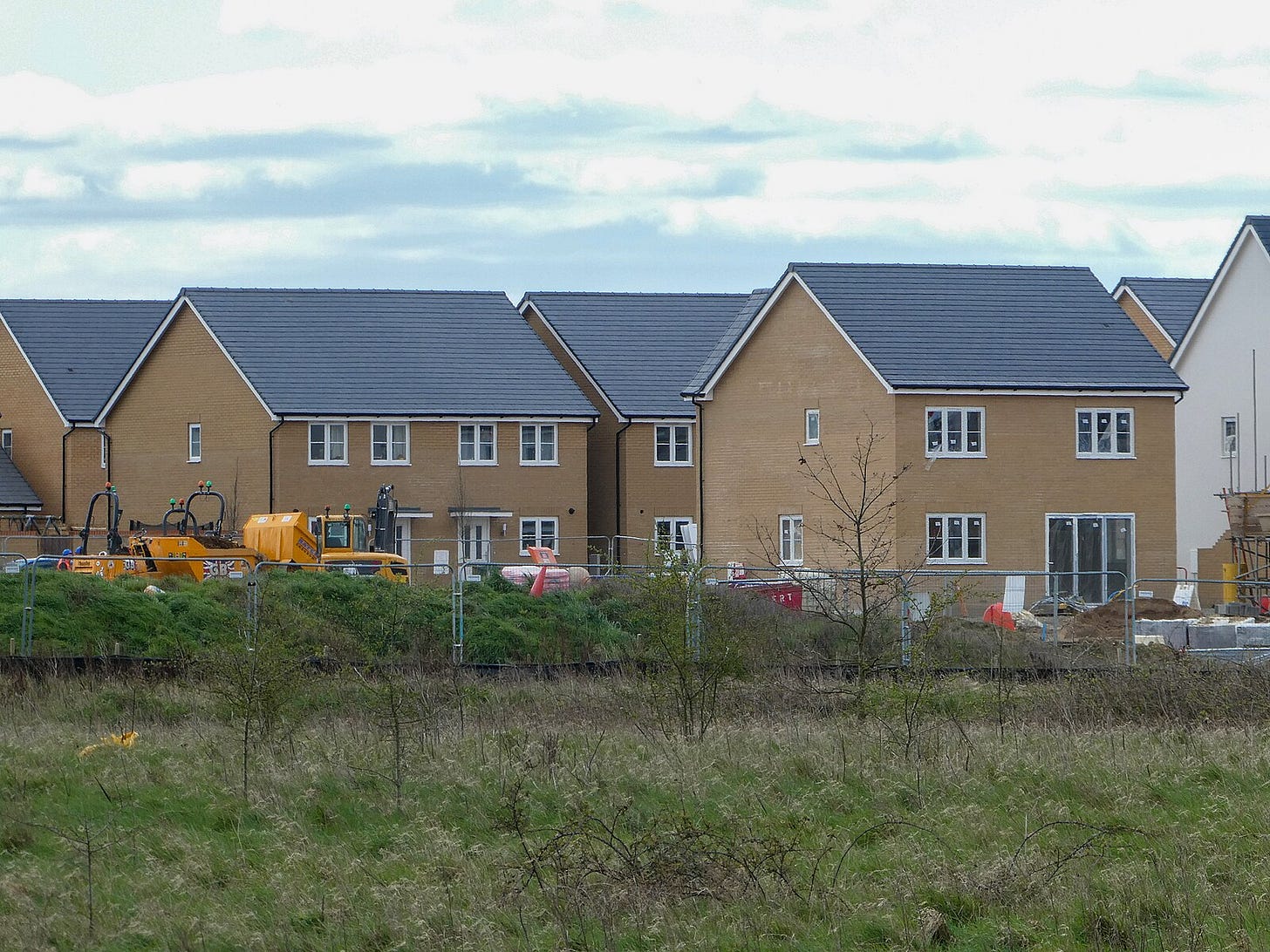Unlocking more homes: Increased first time buyer mortgage lending as a driver for housebuilding
How more first time buyer lending can drive housebuilding and the regulatory change that could unlock even more support
Since the 2008 financial crisis mortgage lenders have been reluctant to lend in the same way on new build houses as they do on existing homes. In a normal market mortgages tend to be available at 95% loan to value (LTV) but for new build houses this has often been 85% or at best 90%.
Help to Buy offset the impact of these decisions as the equity loan element meant that the customer only had to put up a 5% deposit, therefore accessing higher loan to value lending. Without this support first time buyer new build purchases have dropped significantly.
Since the closure of the Help to Buy scheme in October 2022 there has been a fall in first time buyers purchasing new build homes. Mortgage new build sales in 2024 were around a third lower than in the last full year of the Help to Buy scheme in 2022. A major part of this changes has been the change in deposit requirements along with affordability challenges.
Nationwide changes lending policy to support more first time buyer new build purchases
Nationwide, the UK’s biggest building society and number one lender to first time buyers during 2024, has announced that it will increase the LTV available for those looking to purchase a new build house to 95% on 26 June (up from 90%), as it ramps up support for the Government’s housing ambitions.
Announcing the change Henry Jordan, Nationwide’s Director of Home, said:
"These changes have the potential to meet the strong first-time buyer demand for new builds that has gone unmet since the end of Help to Buy, whilst also stimulating the construction sector to build more homes with the confidence that buyers can get a mortgage on them. However, without a review of the high loan to income limit, this potentially significant change for first-time buyers, the construction sector and growth more broadly, will be constrained in terms of impact.”
Nationwide has also made some other changes to its lending policy including increasing its maximum LTV on new build flats from 75% to 85% and extending its offer period on new build properties from six months to nine months. This longer offer period reduced the risk of needing to reapply for a mortgage in the event a property takes longer to complete.
Replacing Help to Buy? Combined high LTI and LTV lending
A key aspect of Nationwide’s changes is that it’s Helping Hand first time buyer mortgage product. This allows a first time buyer to borrow up to six times their income, a third more than Nationwide’s standard lending.
Combining high LTV and high LTI lending to enable 95% LTV mortgages and lending at six times income is similar to what was effectively on offer through Help to Buy. As the equity loan aspect wasn’t taken into account during lenders’ calculations it effectively enabled first time buyers to achieve a higher income multiple when considered across the full value of the property.
This step could address the fall in first time buyer new build purchases by making it easier for these buyers to access mortgage lending in the way they need to buy these homes.
The hope will be that this also provides a positive signal to housebuilders that lending will be available on homes they build. This should encourage them to build more homes, ultimately helping increase the chances of meeting the Government’s target of 1.5 million new homes.
Regulatory limits on high LTI lending
Helping Hand has supported more than 57,000 customers since its launch in 2021 including more than 26,000 customers using the product between April 2024 and March 2025.
Helping Hand is the main reason Nationwide was first for first time buyers in 2024. There is however a regulatory limit on this type of lending which may reduce the impact the lending policy changes can have. The Bank of England Financial Policy Committee’s LTI flow limit means the amount of lending that can be done at or above 4.5 times income is capped to no more than 15 per cent of a provider’s total qualifying loans.
Nationwide’s media release on the changes sets out why this is a challenge
“Nationwide is continually having to manage its lending relative to that limit and these positive changes to its maximum LTVs for new build properties will add volume which may require further action to ensure Nationwide remains within the limit.”
If more potential buyers are to be supported through a combination of high LTV and high LTI lending and the subsequent support for housing development unlocked, this limit needs to increase.
Increasing the high LTI flow limit
The LTI cap limits the positive impact changes such as these can have. The 15% flow limit puts a cap on the amount of high LTI lending each mortgage provider can do.
Nationwide is continually having to manage its lending relative to this limit. The changes to maximum LTVs for new build properties, designed to support more first time buyers will add volume which may require further action to ensure Nationwide remains within the limit.
An increase in the flow limit from 15% to 20% at the next FPC meeting in early July would enable more people to own a home of their own.
Ultimately this helps drive the wider housing market and any change would contribute to help build more homes.




